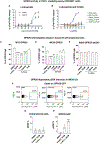GPR35 and mediators from platelets and mast cells in neutrophil migration and inflammation
- PMID: 36928841
- PMCID: PMC10504419
- DOI: 10.1111/imr.13194
GPR35 and mediators from platelets and mast cells in neutrophil migration and inflammation
Abstract
Neutrophil recruitment from circulation to sites of inflammation is guided by multiple chemoattractant cues emanating from tissue cells, immune cells, and platelets. Here, we focus on the function of one G-protein coupled receptor, GPR35, in neutrophil recruitment. GPR35 has been challenging to study due the description of multiple ligands and G-protein couplings. Recently, we found that GPR35-expressing hematopoietic cells respond to the serotonin metabolite 5-hydroxyindoleacetic acid (5-HIAA). We discuss distinct response profiles of GPR35 to 5-HIAA compared to other ligands. To place the functions of 5-HIAA in context, we summarize the actions of serotonin in vascular biology and leukocyte recruitment. Important sources of serotonin and 5-HIAA are platelets and mast cells. We discuss the dynamics of cell migration into inflamed tissues and how multiple platelet and mast cell-derived mediators, including 5-HIAA, cooperate to promote neutrophil recruitment. Additional actions of GPR35 in tissue physiology are reviewed. Finally, we discuss how clinically approved drugs that modulate serotonin uptake and metabolism may influence 5-HIAA-GPR35 function, and we speculate about broader influences of the GPR35 ligand-receptor system in immunity and disease.
Keywords: GPCRs; chemotaxis; lipid mediators; mast cells; neutrophils; platelets.
© 2023 John Wiley & Sons A/S. Published by John Wiley & Sons Ltd.
Conflict of interest statement
Conflict of Interest Statement
To the best of their knowledge, the authors have no financial or personal relationships that could be viewed as a conflict of interest.
Figures








